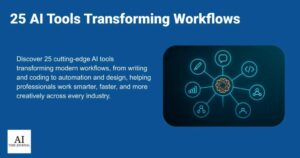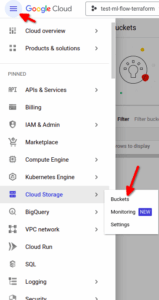
Rise of AI Agents
With the explosion of AI Agents, it is safe to make this claim that if you open any product roadmap and you’ll see some flavors of these statements: “Make it smarter.” “Handle the boring stuff for users.” In other words, let the product act on the user’s behalf (in autopilot).
That’s what we mean by an agentic experience. A traveler tells an app, “If my flight is cancelled, just fix it.” A finance lead asks a platform to “find every contract that expires next quarter and draft renewals, upsell options, and offers.” A freelance designer flips on auto-bidding for projects under $500. In every case, the human hands over intent, and the software is expected to handle the grind.
Evolving all software for the agentic world is easy to put in writing , wildly different to deliver, especially when your audience ranges from single-click consumers to security-obsessed enterprises to two-sided marketplaces where goals can collide.
The Anatomy of an AI Agent
Before we dive into those differences, let’s align on the four beats every agent dances to:
- Hear the ask. Natural language, a toggle, multimodal understanding, event-driven etc, are different hooks to listen to the user intent
- Gather additional context. Permissions, past data & live streaming data, conversational experiences to gather more data.
- Do the job. Choose a plan, carry it out, show the progress as it’s being made, and give controls to the user to gain trust.
- Report back (and rewind if needed). “Here’s what I did, here’s why, and here’s the big red undo button just in case.”
If that loop feels fuzzy anywhere, the magic fizzles.
Same Dream, Three Very Different Worlds
Whether you’re building for consumers, enterprises, or building for a N-sided marketplace, it is imminent that Agentic user journeys are going to be more of a necessity than a need in the very near term. The dream is the same, but these are very different problem spaces, and I want to touch upon the differences and how to build towards a magical experience.
Consumer Apps – The 30-Second Trust Test
In my opinion, consumer apps are the hardest to build primarily because consumer behavior is unpredictable. You’re dealing with a wide range of users, each with their preferences, expectations, and interpretations of value. What resonates with one group might completely miss the mark with another, which makes product-market fit incredibly nuanced and fragile. Consumers always play a harsh game of prove it or lose me. You get maybe half a minute, often less, to show value. If your travel app re-books a cancelled flight before the gate agent even reaches the desk, you’re a hero. If it stutters or books the worst option with a 15-hour layover, leaving out the best 1-stop option, the user takes the autonomy back from you, or worse, uninstalls and never looks back.
What helps is making things feel easy from the start, like invisible onboarding, quick recovery when the AI fumbles, and a simple “no worries, just tap to undo” kind of vibe. The first win should feel magical, but still low-stakes like splitting a bill with friends in one tap. That moment builds trust. It shows the AI’s got your back, and from there, you can expect the user to hand over bigger stuff, maybe even letting it manage your money or help you invest. One small win at a time.
Enterprise – Sandbox First, ROI or Bust
Building for the enterprise is a different game. Unlike consumer apps, where delight and stickiness often lead the way, enterprise buyers are laser-focused on ROI, security, compliance, and operational fit. It’s not just about what your product can do; it’s about what it won’t break. These teams are under pressure to avoid workarounds, manual rework, and anything that might trigger more work for their teams/orgs. If your tool adds friction to audit trails or introduces ambiguity, it’s not getting through procurement, no matter how clever the interface is.
Successful B2B products lead with proof, not promises. Imagine rolling out an AI SDR (I pick this because of the flood of AI SDR billboards in SF) inside a sales org. Start your story with a sandbox – it doesn’t start sending emails on day one. Instead, it lives in a read-only sandbox, where SDRs & Sales managers can quietly observe what the AI would do: the leads it would prioritize, the messages it would send, the meetings it would book. No permissions granted, no risk incurred, just insight. Add a “minutes saved” counter and a downloadable log of all suggested actions, and suddenly your internal champion has a story they can take to leadership. Something like: “This tool could save each SDR 10 hours a week and double our outbound coverage.” That slide isn’t just a brag; it’s the budget unlock
Marketplaces – Two Hearts Beating Out of Sync
Marketplaces are complex by nature. You’re not just building for one user; you’re balancing two (or more) sides, each with their own goals, behaviors, and frustrations. And often, their priorities don’t align. One side wants speed, the other wants control. One side wants volume, the other wants quality. Optimizing for both is less about finding a perfect middle ground and more about designing transparency, trust, and feedback loops into the system on both sides.
Take a freelancer marketplace, for example. Freelancers want higher rates and dependable clients. Clients want fast turnaround and competitive pricing. An AI-powered auto-bidder could serve both sides if it’s done right. That means giving freelancers full visibility into how their bids are generated and where they’ve set their guardrails. It also means giving clients a clear, shareable summary of what the AI understood before any money changes hands. Add in a few safety nets like routing low-confidence matches to manual review, and suddenly both sides feel safer using the system.
When designing for marketplaces, the first step isn’t building, it’s diagnosing. Are you demand-constrained or supply-constrained? That answer should shape everything from onboarding flows to go-to-market sequencing. There’s no universal rule that says “always start with supply/ demand”. We are also going through a shift, where demand is increasingly getting fragmented and democratized. With buyers finding services through voice agents, search engines, and chatbots, many platforms no longer own demand; they compete to aggregate it. Supply, on the other hand, is still a moat.
Going back to freelancers. They’re putting their time, reputation, and income on the line. If your AI agent or auto-bidder feels opaque or overly controlling, they’ll churn. But if it feels like a helpful copilot that saves time and respects their boundaries, they’ll not only stay, they’ll advocate. That’s why even in ambiguous cases, leaning into supply-side trust and tooling is often a solid bet. Word spreads fast among tight-knit supply communities, and when it does, it pulls demand along with it without you having to spend heavily on acquisition.
In contrast, if you’re building in a market flooded with supply, say, generalist services like stock photography, craft marketplaces, etc, it might make more sense to win over high-intent buyers first. Show them that your agent reduces time-to-fill or improves match quality, and then use that buyer signal to attract top-tier/ exclusive supply looking for high-intent demand.
Either way, the north star is the same: design around the constraint, earn trust on the edge that’s hardest to grow, and make the agent’s decisions transparent enough that both sides feel in control.
A Builder’s Playbook
Choose one painful job. Don’t boil the ocean. Find the task users complain about every Friday afternoon, the one they’d gladly offload even if the agent’s first draft isn’t perfect. For travelers, that’s flight disruption, handling cancellations, etc. For controllers, it’s reconciliation. For freelancers, it’s “write my 50th cover letter of the week.”
Climb the trust ladder. Begin in “suggest” mode. Let people peek at the agent’s homework. Then ask for a one-click confirmation. When success stories pile up, invite them to turn on full autopilot. Remember, the key is to always give users the control to choose the level of autonomy they want with an “Autonomy Slider”. That gradual climb teaches the agent real-world edge cases without blowing up anyone’s day.
Show your work. Human-readable logs aren’t just for compliance; they’re your best debugging tool. When users can see how the agent reached a decision, they’re far more forgiving of the occasional misstep. But if it feels like a black box, even small errors feel suspicious. Transparency fosters trust, even in challenging times.
Escape hatches everywhere. Undo should be faster than doing. A permanent pause button gives skeptics peace of mind. And a visible “talk to a human” option, staffed or not, quietly answers the nagging question: what happens if this goes wrong? Safety nets aren’t just functional; they’re emotional design.
Update often. The world moves fast, regulations change, data gets stale, and weird edge cases go viral overnight. A static agent is a brittle agent. Keep a living playbook, review it regularly with domain experts, and adapt. It’s how you stay sharp and keep the support queue from catching fire.
Tracking Progress on a Bumpy Road
Growth hackers love clean, linear paths and hockey stick lines, but real-world adoption is rarely that neat. Your AI agent might see early enthusiasm, only to hit a wall after a single bad prediction. Usage can surge, stall, or regress entirely. That’s why your metrics need to reflect the journey, not just the destination.
Here are a few signals worth watching:
- Early confidence: How many new users try at least one delegated task? This shows initial willingness to engage.
- Habit strength: How often do returning users let the agent take action without supervision?
- Trust health: How frequently do users hit “undo” or revert to “suggest” mode after trying “auto”?
- Productivity lift: Are you able to show real-time or cost savings even before revenue moves?
- Advocacy: Do users speak up in Slack threads or meetings internally or in sub-reddits and other forums to defend the agent when someone questions its value?
Adoption isn’t linear. Expect plateaus, backslides, and sudden leaps. Celebrate each small climb and treat every dip as a design clue, not a failure.
What Success Feels Like
I was thinking recently about what success really looks like for agentic products. One exercise I keep coming back to is something I picked up during my time at Amazon: reading/writing press releases before building the product. These PRs included hypothetical user quotes that captured not just what the product did but how it made someone’s life better, easier, or more successful. It forced us to define the value proposition in human terms.
So I applied that same principle here, imagining what users might say when an AI agent has truly earned their trust:
Consumer
“My flight got cancelled, but the app rebooked it before I even found the new gate.”
“I didn’t just save money, the agent renegotiated three of my subscriptions while I was sleeping.”
“It feels like I have a personal assistant, but without needing to ask twice.”
Enterprise
“Don’t touch the spreadsheet, let the bot handle it.”
“It used to take a week to prep the monthly close; now it’s mostly done before I log in on Monday.”
“We don’t open tickets anymore. The agent sees the pattern and fixes the report before finance notices.”
Marketplaces
“I woke up to three perfect proposals the agent sent overnight.”
“The auto-bidder filled my open role while I was on a Zoom call.”
“It’s like having a headhunter who never sleeps and listens.”
That’s when you know the agent has crossed the chasm. It’s no longer just a feature; it’s a trusted partner. Turning it off would feel like ripping out the Wi-Fi. Congratulations: you’ve built more than software. You’ve earned trust.
Parting Thoughts
Building an agentic experience is less about algorithms and more about relationships: between user intent and system action, between quick wins and long-term trust, between the human urge to delegate and the human fear of losing control. Keep those relationships healthy, and your product stops being a tool in a menu and starts acting like a teammate, a friend, and a partner your users can’t live without.


